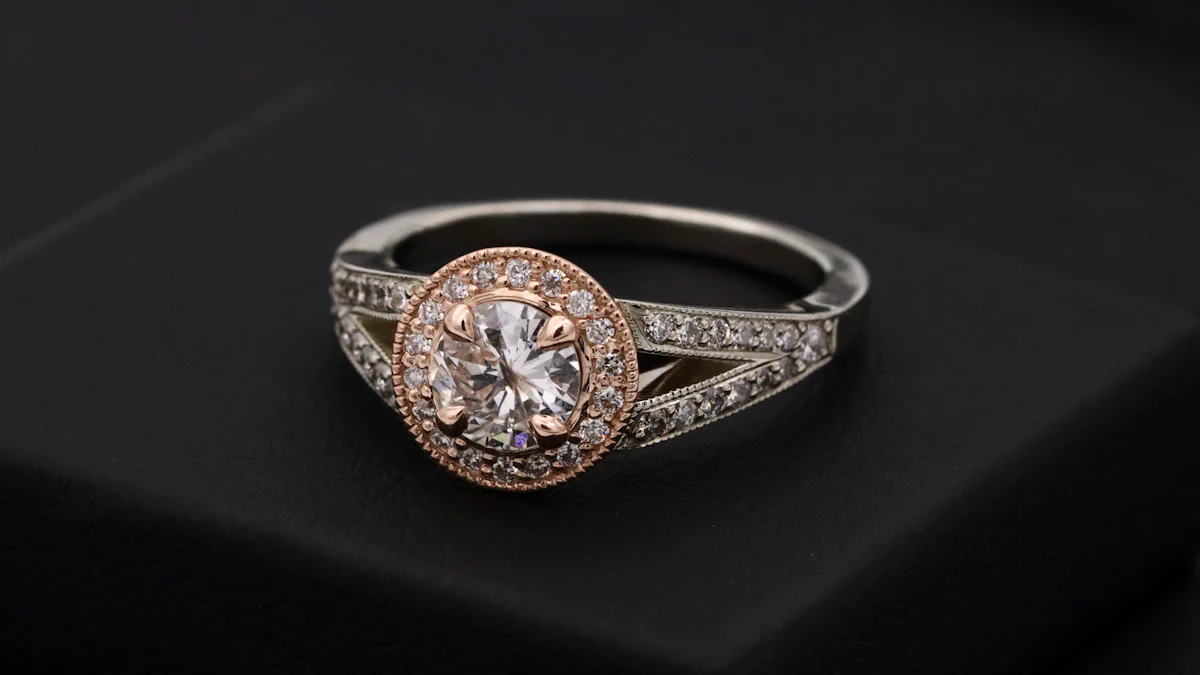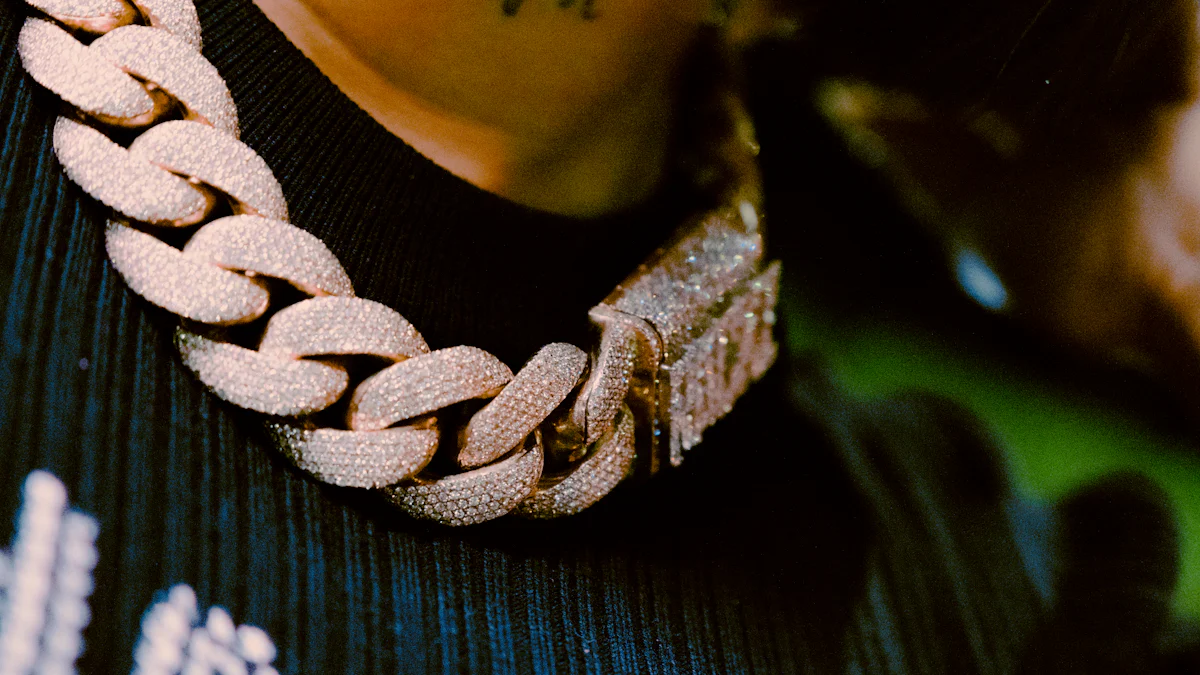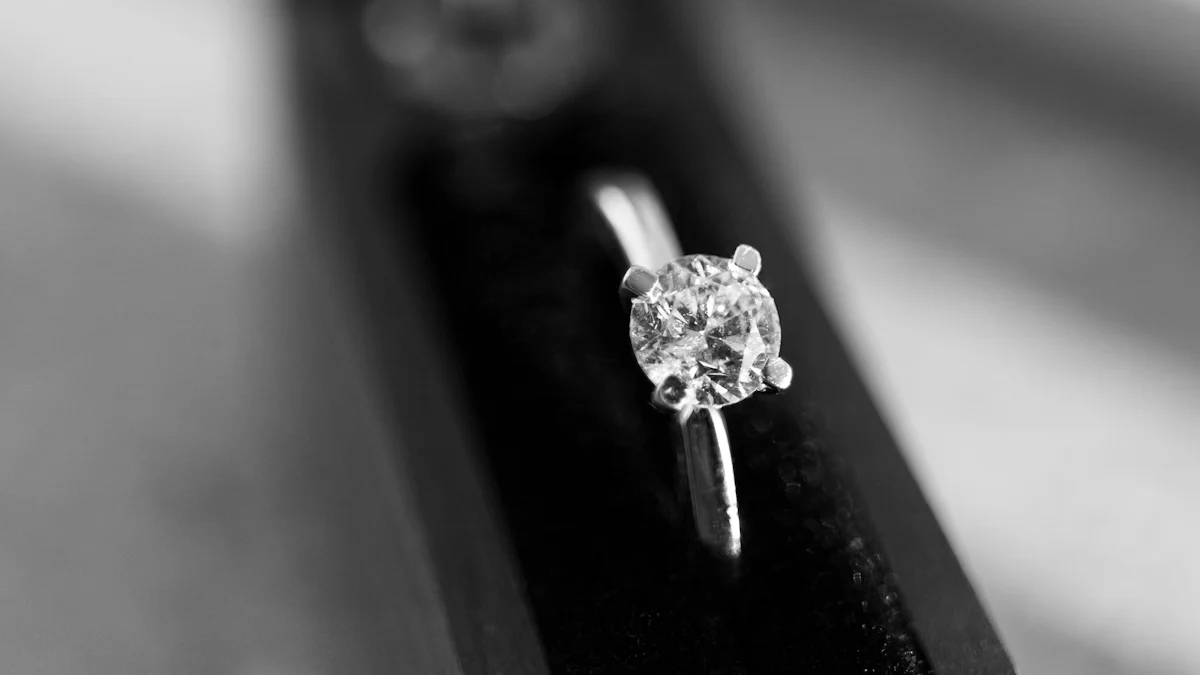What Makes White Gold Different from Pure White?

White gold and pure white might seem similar, but they have unique qualities. White gold combines pure yellow gold with other metals to create a distinct white gold color. Pure white refers to naturally occurring metals with a bright, white appearance. Understanding these differences helps you make informed choices when selecting jewelry. Whether you prefer the elegance of white gold or the simplicity of pure white, knowing what sets them apart enhances your decision-making process.
Understanding White Gold

Composition of White Gold
White gold offers a unique blend of metals. The composition includes a significant amount of gold content. Jewelers typically use about 75% pure gold in white gold. This percentage ensures the piece retains its value and luster.
Alloying metals play a crucial role in creating white gold. Common metals like silver, nickel, or palladium mix with gold. These metals give white gold its distinct color and enhance its strength. The combination results in a beautiful and durable jewelry option.
Characteristics of White Gold
The appearance of white gold stands out. The white gold color has a subtle yellowish undertone. Rhodium plating often enhances this color to achieve a bright white finish. This plating gives white gold its signature shine.
Durability and strength make white gold a popular choice. The alloying metals contribute to its robustness. White gold withstands daily wear and tear better than pure gold. This quality makes it ideal for rings and other frequently worn pieces.
Creation Process of White Gold
The alloying process forms the foundation of white gold creation. Jewelers carefully mix gold with selected metals. This process alters the natural yellow hue of gold. The result is the unique white gold color that many admire.
Rhodium plating adds the final touch to white gold. This step involves coating the jewelry with a thin layer of rhodium. The plating enhances the brightness and protects the surface. Regular maintenance may require re-plating to maintain the desired look.
Exploring Pure White
Definition and Examples
Naturally Occurring Pure White Metals
Pure white metals shine with a natural brilliance. Metals like platinum, silver, and palladium fall into this category. These metals boast a bright white appearance without any need for plating. The natural beauty of these metals makes them highly sought after in jewelry.
Common Uses and Applications
People love using pure white metals in various ways. Jewelry designers often choose platinum for its elegance and durability. Silver finds its place in both fine and fashion jewelry. Palladium serves as a popular choice for wedding bands. Each metal offers unique qualities that suit different styles and preferences.
Characteristics of Pure White
Natural Color and Luster
Pure white metals possess an inherent shine. The natural color remains consistent over time. Platinum maintains a silvery-white hue. Silver gleams with a bright, reflective surface. Palladium offers a soft, white luster. These metals require no additional plating to enhance their beauty.
Maintenance and Care
Caring for pure white metals ensures lasting beauty. Regular cleaning keeps the shine intact. A soft cloth works well for polishing. Avoid harsh chemicals that may damage the surface. Proper storage prevents scratches and tarnishing. With a little care, pure white metals stay stunning for years.
Key Differences Between White Gold and Pure White

Color and Appearance
Visual differences
White gold and pure white metals look different. White gold color often has a slight yellowish tint. Rhodium plating gives white gold a bright finish. Pure white metals like platinum shine naturally. No plating is needed for pure white metals.
Impact of alloying on color
Alloying changes the color of white gold. Metals like nickel or palladium mix with gold. This mix creates the white gold color. Pure white metals keep their natural hue. No alloying affects their appearance.
Composition and Material Properties
Metal content comparison
White gold contains about 75% gold. The rest includes other metals. Pure white metals like platinum are not mixed. These metals remain in their natural state. This purity affects the value and feel.
Impact on durability and wear
White gold offers strong durability. Alloying metals add strength. Pure white metals also provide durability. Platinum resists scratches well. Each metal type suits different needs.
Maintenance and Care
Cleaning and upkeep
White gold needs regular cleaning. Rhodium plating may need reapplication. Pure white metals require less maintenance. A soft cloth keeps them shiny. Avoid harsh chemicals for both types.
Longevity and wear over time
White gold can lose its plating over time. Re-plating restores the white gold color. Pure white metals maintain their look longer. Proper care ensures lasting beauty. Both types need attention to stay beautiful.
Considerations for Choosing Between White Gold and Pure White
Personal Preferences
Aesthetic appeal
Think about what catches your eye. White gold offers a sleek, modern look. The white gold color shines with a bright finish. Pure white metals like platinum have a natural, elegant glow. Each option brings a unique charm. Your choice depends on what style you love.
Budget considerations
Your budget plays a big role in decision-making. White gold often costs less than pure white metals. The alloying process makes white gold more affordable. Platinum and other pure white metals tend to be pricier. Consider what fits your financial plan.
Practical Applications
Suitability for different types of jewelry
Consider what type of jewelry you want. White gold works well for rings and bracelets. The white gold color complements many gemstones. Pure white metals suit high-end pieces. Platinum often appears in engagement rings. Think about where you’ll wear the jewelry.
Lifestyle and usage factors
Your lifestyle matters when choosing jewelry. White gold offers durability for active lifestyles. The rhodium plating protects against scratches. Pure white metals like platinum resist wear and tear. Consider how often you’ll wear the piece. Choose what fits your daily life best.
Recommendations and Final Thoughts
Summary of Key Points
Recap of differences
White gold and pure white metals have distinct qualities. White gold combines gold with other metals, creating a unique color. Pure white metals like platinum shine naturally without plating. Each option offers different durability and maintenance needs.
Importance of informed decision-making
Understanding these differences helps you make smart choices. Knowing what suits your style and budget ensures satisfaction. Consider how each metal fits your lifestyle and preferences.
White gold and pure white metals offer unique qualities. White gold combines gold with other metals, giving a modern look. Pure white metals like platinum shine naturally and need less upkeep. Consider what suits your style and budget. Think about how each metal fits your lifestyle. Make choices that reflect your personal taste. Jewelry should match your needs and preferences. Choose wisely to enjoy your pieces for years.
See Also
The Unique Appeal of a 3 Diamond Gold Ring
Comparing Leading Brands of White Diamond Rings
The Characteristics of a Perfect Diamond Ring

